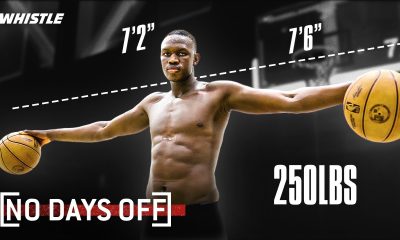Sports
Dr. Phil's TV channel is airing a successful boxing league?


What the hell is even going on in the year of our lord 2025?
First The CW and Ion start airing live sports? Fine. That’s fine. In fact, that makes sense. There’s plenty of smaller sports properties that can benefit from the reach provided by those channels.
Next, QVC starts airing pickleball. Whatever. I mean, the moms watching QVC probably already play pickleball anyway, so I guess it makes sense. Might as well sell a few more paddles.
But Dr. Phil’s TV channel airing boxing? Now we’ve gone too far.
For the uninitiated, yes, Dr. Phil of The Oprah Winfrey Show fame now has his own television network. It’s called Merit TV and is available on all of your normal cable and satellite providers, and even over-the-air in certain markets. Merit TV primarily deals in true crime and lifestyle fare like Crime Stories with Nancy Grace, but has recently dipped its toe into sports programming.
First, Merit TV aired Professional Bull Riders (PBR) events that weren’t designated for CBS or CBS Sports Network. That deal seemingly fell through last year over alleged unpaid rights fees from Dr. Phil’s media company.
Now, Merit TV has debuted TCL Team Boxing League (TCL), a new boxing promotion that divides fighters into different teams split between weight classes with each team designated to a city. And shockingly, the first five weeks have gone very well.
According to a report by Marc Berman in Forbes, TCL has amassed a combined audience of 3.5 million viewers through its first five weeks on Merit TV. That data is according to Nielsen, so it’s legit. Across five telecasts, that comes out to an average of 700,000 viewers per show. Those are numbers that are on-par (if not slightly better) than the UFL spring football league is putting up on Fox, ABC, and ESPN.
“Boxing is underleveraged, underutilized, underexposed and I just spent many years of my life building a sport into a full-time destination. This is a real sport. We are not selling violence. And are telling stories and building fandom,” said Ken Solomon, the CEO of Merit TV and the former CEO of, wait for it, the freaking Tennis Channel! That’s right, Dr. Phil’s TV venture has a legit sports media executive at the helm.
Let’s just say, I didn’t expect Dr. Phil to lead a burgeoning sports media empire in the year 2025. But here we are.

Sports
LOVB Nebraska ready to serve up Season 2 in League One Volleyball

Omaha, NEB — League One Volleyball is set to open its second season in January, and LOVB Nebraska enters the year with momentum, experience, and a culture built on connection.
The Nebraska-based squad features a blend of Olympians, national champions, and former Nebraska Cornhuskers, a mix that players say has helped foster strong chemistry both on and off the court.
“They care a lot about impact and significance and connection and relationships,” head coach Suzie Fritz said. “And I cannot speak enough to the phenomenal women that I spend my days with. They are extraordinary.”
That respect for the game — and for each other — is something players believe will translate directly to success during the season.
“I think one thing Susie does well is creating a culture,” former Husker Jordan Larson said. “Obviously, right now we haven’t competed, so the measurement is ourselves. When tension starts to rise, having a great culture and foundation is important to fall back on.”
LOVB Nebraska leaned on that foundation last season, even when challenges arose.
“You take last season, where we had a few bumps in the road,” Larson said. “What really paid off in the end was that we had a healthy culture and were able to perform when it really mattered.”
Players say that culture feels even stronger heading into year two.
“Chemistry always plays a big part, and that starts with what you do off the court,” former Husker Lexi Rodriguez said. “The coaching staff really emphasizes that culture piece, which helps when things aren’t going as well during the season.”
The result, they say, is a team that not only competes well but is also enjoyable to watch.
“Everyone gets along so well,” Rodriguez said. “We’re really just vibing and jiving and having a good time together, and I think it makes us pretty fun to watch.”
LOVB Nebraska opens the season on the road Jan. 7 at Austin. The home opener is scheduled for Jan. 11 against Houston. The team will also play a March matchup at the Heartland Event Center in Grand Island.
Sports
Texas A&M volleyball champion Logan Lednicky sets program record
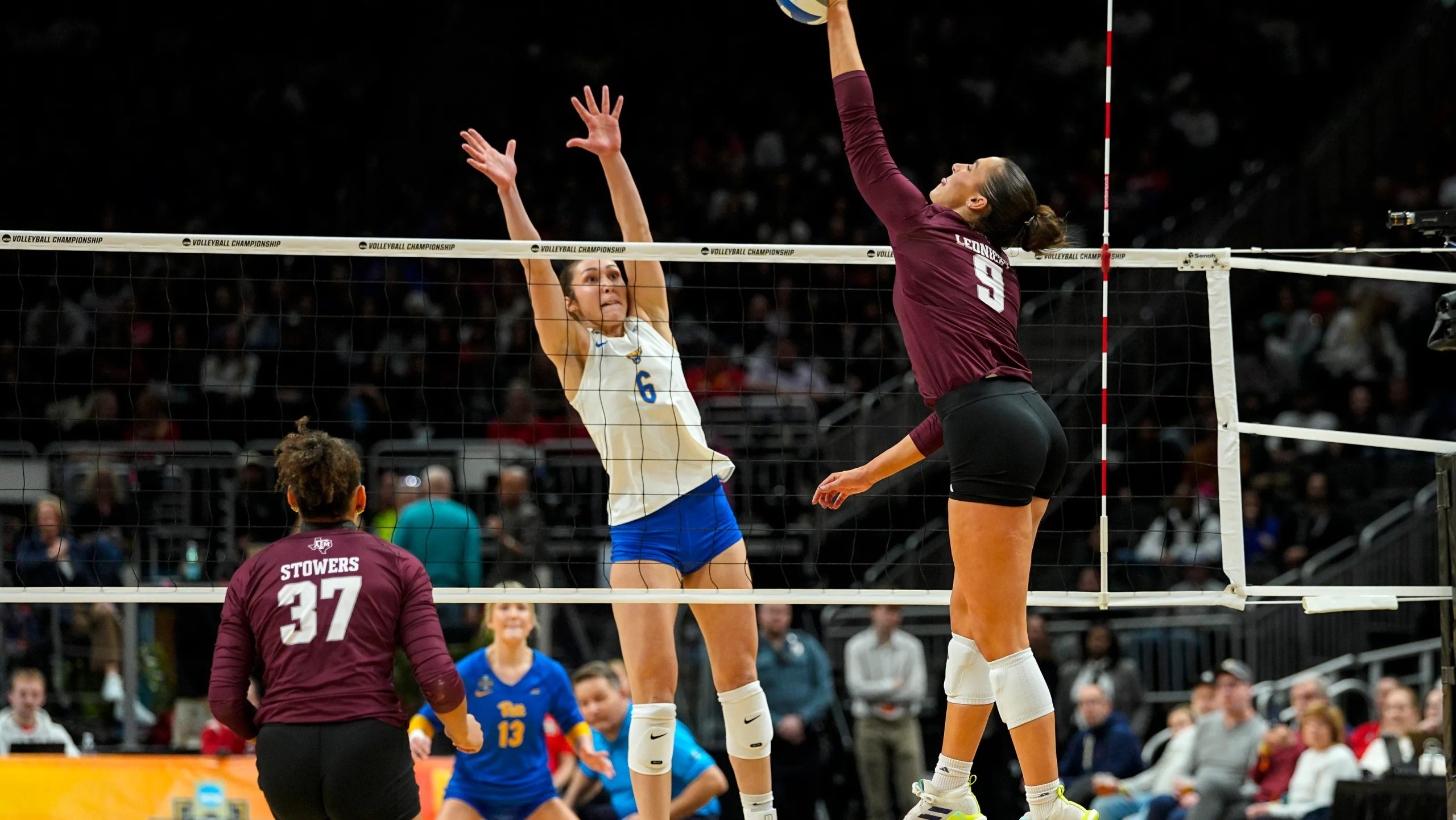
Dec. 27, 2025, 2:31 p.m. CT
The college volleyball world is still stunned by Texas A&M’s utter domination of its championship run through the Final Four and the national title path. One of the top players in the country played a key role in that run and historic season.
Senior Logan Lednicky is an Aggie legacy who had a childhood dream of attending Texas A&M. As she progressed in her volleyball career, that goal shifted to bringing a volleyball title to Aggieland.
The future Aggie Hall of Famer achieved that goal under the tutelage of A&M head coach Jamie Morrison, the 2025 AVCA Coach of the Year, and helped develop her into a professional volleyball player.
While her name will forever be in the record books as being part of the first-ever Texas A&M volleyball team to win a title, she also set an impressive individual record. Lednicky’s 1,686 kills are the most in program history in the rally-scoring era for one of the more accomplished volleyball careers at A&M.
Logan Lednicky Career stats:
Kills: 1686 / 3.97 per set
Hitting %: .269
Blocks: 378 / 0.9 per set
Aces: 49 / .12 per set
Contact/Follow us @AggiesWire on X (formerly Twitter) and like our page on Facebook to follow ongoing coverage of Texas A&M news, notes and opinions. Follow Jarrett Johnson on X: @whosnextsports1.
Sports
Torrey Pines’ Finley Krystkowiak highlights All-CIF girls volleyball team
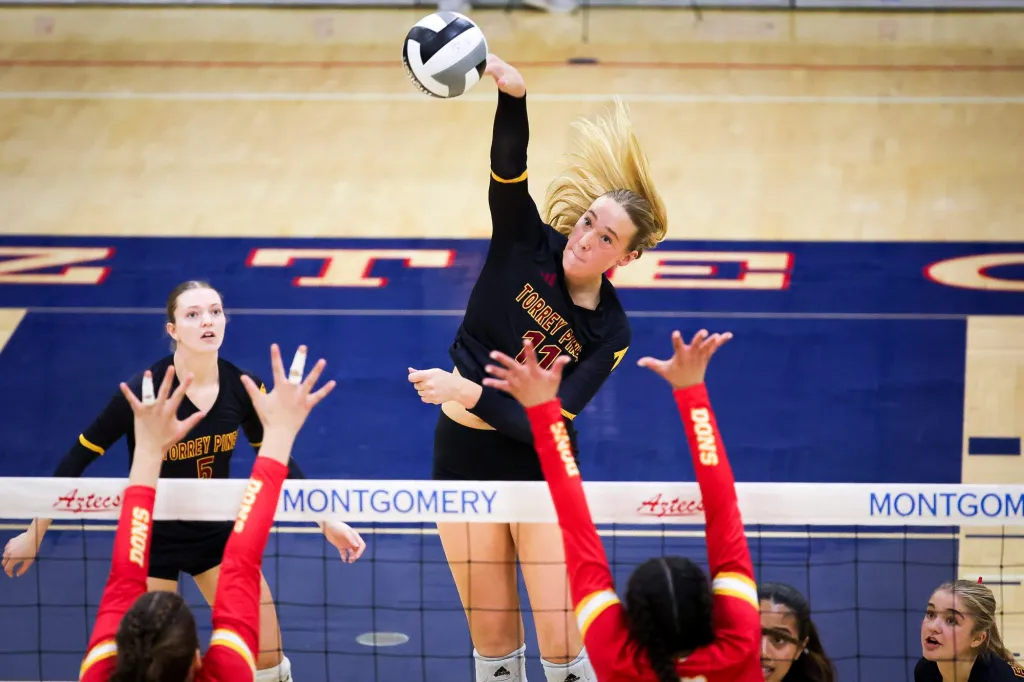
2025 All-CIF Girls Volleyball Teams
Player of the Year: Finley Krystkowiak, Torrey Pines
A senior outside hitter, Krystkowiak finished the season with 328 kills, including 20 against Manhattan Beach Mira Costa in the Falcons’ CIF San Diego Section Open Division championship win. She also had 251 digs, 30 blocks and 56 service aces. Torrey Pinse finished the season 38-5, ranked No. 3 in the state and No. 9 in the nation, losing to Santa Ana Mater Dei in the Southern California Regionals. The 6-foot-3 Krystowiak has signed to play at Penn State.
Libero of the Year: Lilia Green Torrey Pines
Coach of the Year: Roni Greenwood-Harper, Scripps Ranch
First team
Name, School, Year
Finley Krystowiak, Torrey Pines, Sr.
Jaycee Mack, Torrey Pines, Jr.
Ashlynn Proctor, Coronado, So.
Madyson McCarthy, Cathedral Catholic, Sr.
Alison Dzieciuch, Cathedral Catholic, Sr.
Bryce Leatherwood, Scripps Ranch, Sr.
Cam Holcomb, San Marcos, Sr.
Alice Burgett, La Jolla Country Day, Jr.
Myah Koster, Bishop’s, Jr.
Second team
Name, School, Year
Emery Gonzales, Torrey Pines, Sr.
Danica Nordlicht, Torrey Pines, Sr.
Jojo Wilson, Cathedral Catholic, Jr.
Nariah Johnson, Santa Fe Christian, Fr.
Avalon Haro, Coronado, Sr.
Max Pheasant, Christian, Sr.
Vivian Roberts, Westview, Sr.
Caitlin Prior, Our Lady of Peace, Sr.
Tatum Epstein, La Jolla Country Day, So.
Havani Embry, Carlsbad, Sr.
Note: Teams selected by Coaches Advisory Committee.
Sports
Aggies Wrap Up Nonconference Slate Sunday Against Southwest
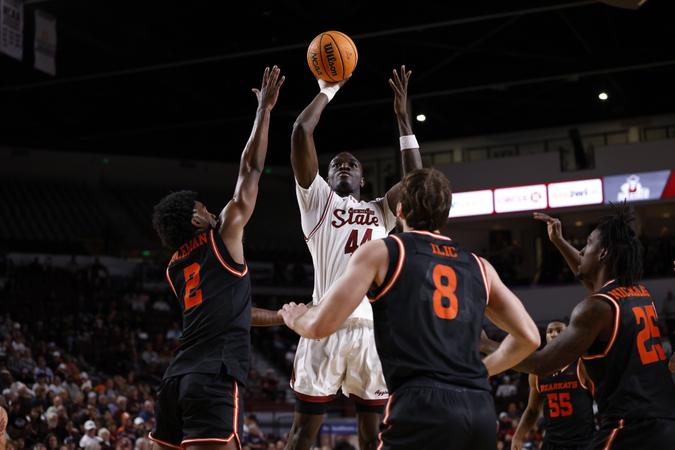
What: Game Eleven
Who: NM State (7-3, 1-0 CUSA) vs University of the Southwest (4-9, 1-6 RRAC)
When: Sunday, Dec. 28, 2:00 p.m. MT
Where: Las Cruces, N.M. – Pan American Center (12,200)
THE OPENING TIP
• Coming off an impressive home victory last Sunday to open Conference USA play against Sam Houston, NM State turns its attention to its final non-conference matchup of the season as it welcomes the University of the Southwest to the Pan American Center on Sunday, Dec. 28, at 2 p.m.
• Sunday’s contest marks just the third all-time meeting between the two programs, with the Aggies holding a 2–0 series advantage. The teams last met a year ago on the same date in Las Cruces, where NM State pulled away for an 85–52 victory.
PERIMETER LOCKDOWN
• NM State is one of just five Division I programs to hold opponents under 30.0 percent shooting from three-point range last season and has continued that defensive standard into the current campaign. The Aggies join Tennessee, Montana, Dartmouth and Appalachian State as the only teams in the nation to accomplish the feat in both seasons. NM State currently ranks 50th nationally in three-point percentage defense, limiting opponents to 29.8% from beyond the arc.
BOOST FROM THE BENCH
• NM State’s depth once again proved to be a difference-maker, as Elijah Elliott and Jayland Randall delivered impactful performances off the bench to help lift the Aggies in their Conference USA opener against Sam Houston.
• Elliott matched his season high with 18 points to lead NM State in scoring, marking the second time this season he has finished as the Aggies’ top scorer while coming off the bench. Randall wasn’t far behind, pouring in 16 points for his second-highest total of the season as the duo combined to provide a major spark for the Crimson & White.
• This marked the second time this season that Elliott and Randall have finished as NM State’s top two scorers while coming off the bench, highlighting the Aggies’ ability to lean on their reserve unit.
• NM State’s bench overwhelmed Sam Houston, outscoring the Bearkats 46–17. The 46 bench points marked the Aggies’ second-highest reserve output of the season, trailing only their 49-point bench performance against South Alabama.
PUNCH FROM THE POST
• Julius Mims delivered strong performances in the last outing against Sam Houston. Mims has been a steady presence all season, averaging 9.3 points and a team-high 7.0 rebounds per game which is also ranked eighth in CUSA. Against the Sam Houston, he flirted with double-double finishing the night with nine points while also leading NM State with nine rebounds. Mims has now led the Aggies in rebounding in six of ten games this season.
IN THE PAN AM
• NM State has thrived in front of its home crowd this season, posting a perfect 5-0 record inside the Pan American Center.
• In home games, the Aggies own a +10.6 scoring margin, shooting 47.5% from the field while holding opponents to just 38.8% shooting.
• A few Aggies have elevated their play at home, led by Jones, who is averaging 16.6 points per game in the Pan Am. Julius Mims is averaging 11.5 points and 9.0 rebounds while shooting an impressive 67% from the field, and Anthony Wrzeszcz is contributing 10.8 points per game while knocking down shots from beyond the arc at a 48% clip.
HISTORIC START
• The Aggies’ 6-0 opening this season marked their best start in more than 50 years. The last NM State team to begin a season this fast was the 1969–70 Final Four team, linking this year’s group to one of the most storied runs in program history.
SCOUTING THE MUSTANGS
• University of the Southwest enters Sunday’s matchup with a 4–9 record and arrives in Las Cruces following a 90–66 road loss to Texas A&M–Texarkana.
• The Mustangs are led by first-year head coach Steven Barker and feature a pair of key contributors in EJ Scroggins and Donovan Holcombe.
• Scroggins leads the team in both scoring and rebounding, averaging 18.5 points and 6.8 rebounds per game, while Holcombe provides additional production at 11.3 points and 5.7 rebounds per contest.
For complete coverage of the 2025-26 season NM State Men’s Basketball, visit NMStateSports.com – the official home of Aggie athletics – and follow us on Twitter (@NMStateMBB), Instagram (@NMStateMBB), and like us on Facebook (NMStateMBB).
++NM State++
Sports
A record-breaking season for UTRGV volleyball

EDINBURG, Texas (ValleyCentral) — The University of Texas Rio Grande Valley’s 2025 volleyball season was filled with record-setting moments and unforgettable performances on the court.
The Vaqueros’ 22-8 regular season and 15-1 Southland Conference record secured a tie of the regular season title, topped with three individuals earning all-conference awards.
Looking back at this season, Head Coach Todd Lowery said, “Nine new faces in the program and just how quickly they came together and how quickly they cared for each other was really fun to be a part of. Of course, all the success on top of that, I think it was really the environment they had and that we had this past season was what was special about this group.”
October 2 marked the turning point of the season. Following a loss to Stephen F. Austin in Nacogdoches, UTRGV went on to win a program-record 16 straight matches. To put the team’s dominance into perspective, only two times UTRGV was pushed to five sets.
“We had the mindset that we were going toward the same direction, and that just made everything easier,” Junior setter Isabella Costantini said. “I feel like after our preseason tournaments, we kind of made that click, that instant switch, of building that chemistry and connection and that made us play the way we did this past season.”
Freshman outside hitter Dimitra Nanou added, “We realized that did not want to be in last place in the conference. We can give some more. We have super talented players on our team, and I was so excited to work more and more every day.”
In the midst of the win-streak, Lowery also reached a milestone: win number 600.
On Nov. 6, UTRGV defeated the University of Incarnate Word, three sets to one, at UTRGV Fieldhouse to clinch to historic win in Lowery’s career.
“Anytime you get to reach a milestone, it’s awesome,” Lowery said. “To reach it with a special group kind of made it more special for me just because even that night, they got the win and everything, but the girls on the team made that night about me, and it should never be about me.”
While Lowery did not want the spotlight on him following the win, his team made sure to give him his flowers.
Sophomore outside hitter Martina Franco said, “Coach literally changed my life when he recruited me to come here, so I’m so happy that he accomplished that with me and the team, you know, just be a part of one of his memories, this important season and his big accomplishment.”
Lowery was also named the Katrinka Jo Crawford SLC Coach of the Year in 2025.
As for outstanding performances, Costantini, Franco and Nanou all shined on the floor, earning Southland Conference awards.
Costantini was named Southland Conference Setter of the Year for the second consecutive time.
She said, “I feel like after my sophomore season where I was recognized as the setter of the year, it was good to get that back, you know, that feeling of all my hard work paid off.”
Franco was named Newcomer of the year.
Franco said, “I was not expecting that at all, but I think when I watch it, I was happy to have something to remember because it was a good season for me and I had a lot of fun and I loved it, so I don’t know. It was a blast to enjoy the season that I have.”
As for Nanou, she was named Southland Conference Freshman of the Year.
“I’m more excited about what we got out of the tournament instead of my award,” Nanou said. “I’m really grateful that I can help my team and receive that award because it’s like a gift from God.”
Despite the historic season for the volleyball program, the team’s final loss to the Ladyjacks in the Southland Conference Tournament Championship Game left a bad taste in the program’s mouth.
The loss fueled them to exceed their performance on the court this season heading into 2026.
Lowery said, “That loss in the conference championship game will drive this team forward. I think just the sentiment. At first, they were sad and then by a week or two later and at this point, they’re angry.”
“The last game we played with the final of the tournament motivates us to push more,” Nanou said. “We can give more. We saw that we can give more, and personally I think everyone is going to put more work in this year.”
Sports
Knights volleyball puts five in college
By Randy Lefko randy@claytodayonline.com
OAKLEAF – Oakleaf High had one of the largest early signing classes last week with nine signees and it was volleyball that stole the show with five athletes putting signatures to paper for one of the largest signing classes for the sport.
“This is largest graduation class for volleyball athletes that are signing for college scholarships for Oakleaf,” said Oakleaf coach Jamie Reed. “Softball has been a big part of the signing athletes in the past here at Oakleaf and the sports has grown to also be one of the all year sports at the school. I try to give them the tools to get here.”
For Reed, who finished at 12-13 for the 2025 season with a hard fought (3-2) district semifinal loss to Tocoi Creek ending the season. “They did all the hard work.”
Joining Reed’s troops on the stage for the early signing day were football standouts Trace Burney and Jordin Price, softball’s Aubrie Jordan and track state medalist Rayna Lawson. Also signed but not present was soccer standout Cole Perez.
Reed’s five signees were April Townsend and Jiyanna Rivera; both to NCAA Div. II Middle Georgia State University; Morgan Ansley, NCAA Div. II Fort Valley State University (25-5 last year); Kelsey Joshua, NCAA Div. II Benedict College (SC) (18-10) and Gabrielle Humbles, NCAA Div. II St. Francis Marion University (SC) (21-10 last year).
“We have all six seniors; one more, that is working on a signing for February,” said Reed, who gave credit to her recruiting coordinator at JJVA (Jacksonville Junior Volleyball Association). “This is my biggest class in 10 years of coaching; five as head coach.”
Reed noted that Joshua got herself signed with little help.
“She did all the work to self recruit,” said Reed. “Kelsey would ask about emails, how to talk to coaches and got herself completely signed on her own.”
Stats wise, Humbles was top scorer with 222 kills and a team leading 49 service aces with Ansley second with 165. Rivera was top record setting assist player with 523 assists for the year and 1570 for her career. Joshua was top dig defender with 215 leading the team.
For football, with the Knights getting to the region quarterfinals and finished at 8-3, Burney was a game breaking wide receiver with 40 catches and six touchdowns and heading to James Madison University while Price was a lock down defensive back; 32 tackles, two interceptions and 10 pass defenses and wide receiver on offense with 18 catches with four touchdowns heading to University of Alabama-Birmingham.
For Burney, who spent his first three years at Fleming Island, the transition to the Oakleaf game was not a far stretch as he opened his senior season with six catches and two scores in game two win over Fleming Island, then eight catches in game three win over eventual three time Rural state champion Hawthorne.
James Madison (12-1) just won the Sun Belt title with a win over Troy, 31-14, to earn a spot in the spot in the College Football Playoffs. James Madison, ranked 12th is reported to be playing No. 5 Oregon on December 19.
Price was a mainstay on both sides of the ball with equal success as a wide receiver and as a defensive back with Price always matching up with opposing team’s best pass catcher.
On the UAB football website, Price’s description is as a three-star defensive back by 247Sports, 121 tackles in four seasons at Oakleaf, six interceptions with a picksix, with 1243 receiving yards and 15 pass touchdowns. UAB finished at 4-8 this year.
Lawson, a track ace for her entire four year career, exploded in her senior season with a third place thrilling finish in a near dead tie with an 11.96 split that had to go to the hundredths of a second to determine second and third. The gold medal was won in 11.75 in one of the closest finishes at the Clas 4A track and field championships.
In the 200 final, Lawson finished ninth at 24.59.
Lawson signed to continue her track at the University of Nevada-Las Vegas. UNLV had nine NCAA region qualifiers and one NCAA championship athlete in the field events.
“UNLV has been with me for a long time,” said Lawson. “Head coach Carmelita Jennings, the Olympic champion (2012 London Games USA Gold 4 x 100 relay, silver in 100, bronze in
200) kept in touch through her senior season. They might put me in the 400, too.”
Oakleaf’s lone softball athlete, Jordan, headed to Florida State College-Jacksonville, had a handful of championship rings with her from club ball action in her career.
Perez, a lead scorer for the Knights soccer team, is headed to University of Akron. Akron lost in the NCAA tournament last year with a 3-2 game against Saint Louis The Zips are currently 13-5-1.
-

 Motorsports2 weeks ago
Motorsports2 weeks agoSoundGear Named Entitlement Sponsor of Spears CARS Tour Southwest Opener
-

 Motorsports3 weeks ago
Motorsports3 weeks agoDonny Schatz finds new home for 2026, inks full-time deal with CJB Motorsports – InForum
-

 Rec Sports3 weeks ago
Rec Sports3 weeks agoDavid Blitzer, Harris Blitzer Sports & Entertainment
-

 Motorsports3 weeks ago
Motorsports3 weeks agoRick Ware Racing switching to Chevrolet for 2026
-

 NIL2 weeks ago
NIL2 weeks agoDeSantis Talks College Football, Calls for Reforms to NIL and Transfer Portal · The Floridian
-
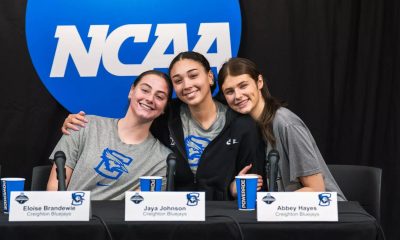
 Sports2 weeks ago
Sports2 weeks ago#11 Volleyball Practices, Then Meets Media Prior to #2 Kentucky Match
-

 Technology3 weeks ago
Technology3 weeks agoWearable Gaming Accessories Market Growth Outlook
-

 Motorsports2 weeks ago
Motorsports2 weeks agoSunoco to sponsor No. 8 Ganassi Honda IndyCar in multi-year deal
-
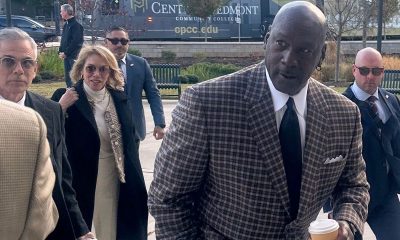
 Motorsports3 weeks ago
Motorsports3 weeks agoNASCAR owes $364.7M to teams in antitrust case
-
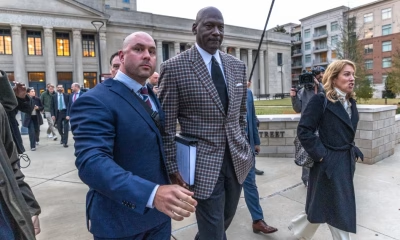
 Motorsports2 weeks ago
Motorsports2 weeks agoNascar legal saga ends as 23XI, Front Row secure settlement


















